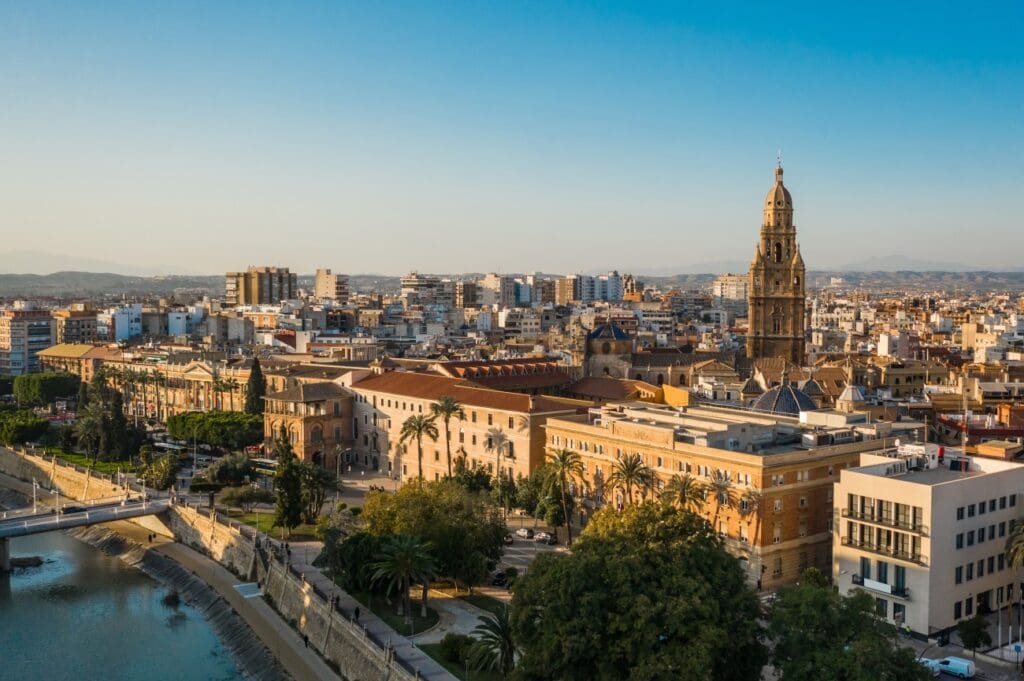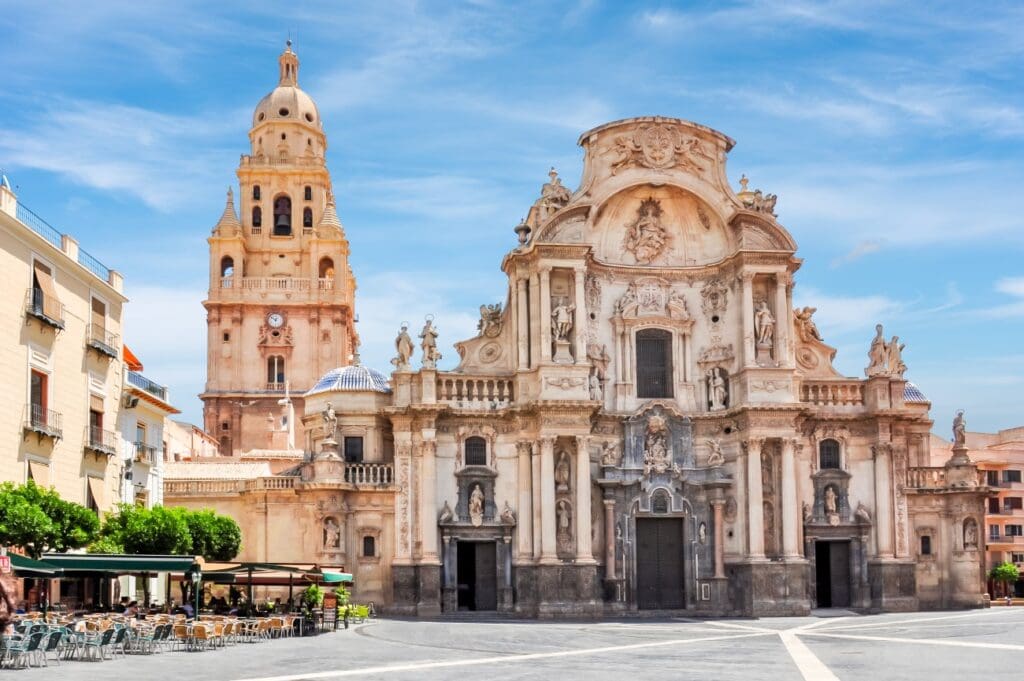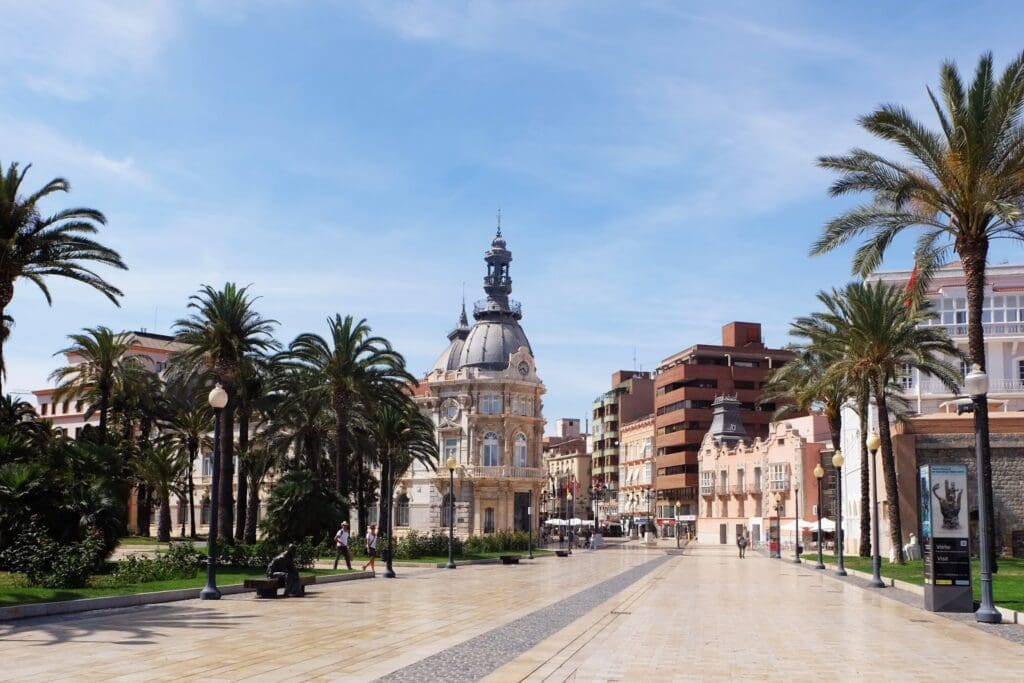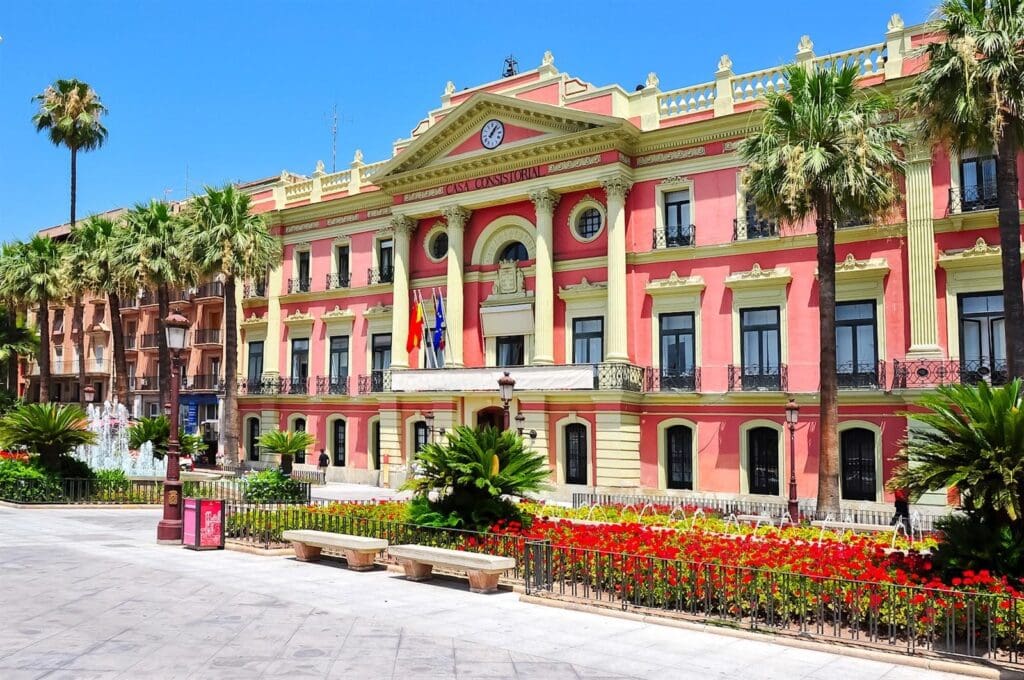
Things to Do in Murcia, Spain: A Comprehensive Guide
Murcia, Spain, is a hidden gem nestled in the southeast of the Iberian Peninsula, offering a wealth of things to see and do. This charming city boasts a rich history, stunning architecture, and a vibrant cultural scene that captivates visitors from around the world. From its impressive Cathedral of Murcia to the elegant Real Casino de Murcia, the city center is a treasure trove of architectural marvels spanning Renaissance, Baroque, and Rococo styles.
Beyond its urban attractions, Murcia has an impact on travelers with its natural beauty and culinary delights. Visitors can explore the nearby Costa Cálida and Mar Menor, soak up the sun at La Manga del Mar Menor, or unwind at spa resorts. The region's food scene is equally enticing, with tapas bars and local specialties waiting to be savored. Whether one is interested in historical landmarks, outdoor adventures, or cultural experiences like the Fiestas de Primavera and Holy Week processions, Murcia offers a diverse array of activities to suit every traveler's taste.
Explore Murcia's Historic City Center

The historic city center of Murcia is a treasure trove of architectural wonders and cultural landmarks. Visitors can immerse themselves in the rich history and vibrant atmosphere of this charming Spanish city.
Visit the Cathedral of Murcia
The Cathedral of Murcia, also known as the Cathedral Church of Saint Mary, stands as a magnificent testament to the city's religious and architectural heritage. Construction of this impressive structure began in 1394 on the site of a former mosque. The cathedral's façade is a stunning example of Baroque style, designed by Valencian architect Jaime Bort. Inside, visitors can admire the Gothic influences that dominate the interior.
The cathedral's bell tower, standing at an impressive 90 meters tall, houses 24 bells dating from the 17th and 18th centuries. These bells have served not only to call worshippers to prayer but also to warn of floods and wars, as well as to celebrate moments of peace.
Stroll through Plaza Cardinal Belluga
Plaza Cardinal Belluga is the heart of Murcia's historic center and a must-visit destination for tourists. This Baroque-style square is dominated by three impressive buildings: the Cathedral of Santa Maria, the colorful Episcopal Palace, and the City Hall. The square's layout has undergone various modifications over time, with the statue of Cardinal Belluga being added in 1885.
The plaza is a perfect spot for people-watching and soaking in the local atmosphere. Visitors can enjoy delicious tapas at one of the many eateries in the square while admiring the stunning architecture surrounding them. The Tourist Office, conveniently located opposite the Cathedral, provides information and literature about the city's attractions.
Discover the Real Casino de Murcia
The Real Casino de Murcia, or Royal Casino of Murcia, is an emblematic building that combines modernist and eclectic artistic styles. Located in the heart of the city center on Calle Trapería, close to the Cathedral, it is the most visited civil building in Murcia.
Built in 1847, the casino features a fascinating mixture of artistic styles from the second half of the 19th century and early 20th century. In 1983, it was declared a National Historical Building and is now considered to be of cultural interest. The building underwent a complete refurbishment between 2006 and 2009, during which King Juan Carlos I of Spain granted it the title "Real" (Royal).
Visitors can explore a series of rooms or salons with a variety of styles for a small entry fee. The English Library, with its breathtaking galleried design, and the magnificent Ballroom are particular highlights. An audio guide is available to provide detailed information about each room, making it one of Murcia's don't-miss attractions.
Experience Murcia's Cultural Attractions

Murcia offers a rich tapestry of cultural experiences that showcase its historical significance and artistic heritage. Visitors can immerse themselves in the city's vibrant cultural scene by exploring its museums and religious sites.
Tour the Salzillo Museum
The Salzillo Museum stands as a testament to the artistic genius of Francisco Salzillo, an 18th-century sculptor who left an indelible mark on Murcia's cultural landscape. This museum houses an impressive collection of religious sculptures and is particularly renowned for its Holy Week floats, which have been part of Murcia's Easter processions since 1600.
The museum's centerpiece is a series of life-sized presentations depicting the Passion and Death of Christ, beginning with the Last Supper. These scenes are set in a beautiful church, creating an awe-inspiring atmosphere for visitors. One of the most outstanding exhibits is "The Supper," sculpted in 1763. It consists of thirteen figures that bring this biblical scene to life.
Visitors can also marvel at other notable works such as "The Prayer in the Garden" from 1754 and "The Arrest," popularly known as "The Kiss of Judas," from 1763. These sculptures showcase Salzillo's mastery in contrasting good and evil through his artistic representations.
The museum also features an impressive Nativity scene started by Salzillo and completed by his disciple Roque López. This elaborate display includes 556 clay figures, each about 30 centimeters tall. For those interested in exploring Murcia's cultural attractions, the Salzillo Museum is open daily from 10 a.m. to 5 p.m., with guided tours available for groups of up to 15 people.
Visit the Santa Clara Monastery and Museum
The Santa Clara Monastery and Museum offer visitors a unique glimpse into Murcia's rich history, spanning from the Middle Ages to the present day. This cultural gem is housed in a building that once served as a palace for Muslim emirs in the 12th and 13th centuries. It later becomes a fortress for Castilian monarchs and finally a royal monastery for Poor Clare nuns from 1365 onwards.
The museum's collection is divided into two main sections. The Andalusian archeology section showcases fascinating architectural remains, including carved woods, decorated plinths, and the remnants of a muqarnas ceiling. One of the most intriguing exhibits is the image of a famous flutist, depicting a woman playing the mizmar.
In the "Times of Silence" room, visitors can explore the sacred art section, which is located in the upper choir and gallery of the monastery. This area displays the artistic works of the Clarisse nuns, including sculptures, paintings and documents. Luxury items are gathered through donations or as gifts from novices entering the convent.
Enjoy Murcia's Natural Beauty

Murcia's natural beauty is a testament to the region's diverse landscapes and abundant sunshine. With over 3,000 hours of sunshine annually and pleasant temperatures year-round, Murcia offers visitors ample opportunities to explore its outdoor wonders. From lush gardens to stunning coastal lagoons, the region has an impact on nature enthusiasts and casual tourists alike.
Relax in the Floridablanca Garden
The Floridablanca Garden, located in the heart of Murcia's Barrio del Carmen, is a serene oasis in the bustling city center. As Spain's first public garden, it holds significant historical importance and was declared an Asset of Cultural Interest in 2017. Spanning 11,330 square meters, this 18th-century garden offers visitors a chance to unwind amidst century-old trees and beautifully maintained flowerbeds.
The garden's botanical diversity is impressive, featuring unique specimens of ficus, tipuanas, jacarandas, and poplars. These towering trees provide ample shade, making it an ideal spot for a leisurely stroll or a peaceful afternoon of people-watching. Visitors can also admire several monuments within the garden. It includes tributes to the Count of Floridablanca and the poet Jara Carrillo, which add to its cultural significance.
Take a day trip to the Mar Menor lagoon
For those seeking to experience Murcia's coastal beauty, a day trip to the Mar Menor lagoon is a must. This unique natural phenomenon is the largest saltwater lagoon in Europe, covering an impressive 170 square kilometers. The Mar Menor, which translates to "Minor Sea," offers visitors a perfect setting for various water activities and relaxation.
The lagoon's warm, shallow waters make it an ideal destination for families with young children. Its depth rarely exceeds seven meters, ensuring safe and enjoyable bathing for all ages. Water sports enthusiasts will find the Mar Menor to be a paradise, with its constant breeze and calm waters. It creates a perfect condition for sailing, kitesurfing, canoeing, and water skiing.
Surrounding the Mar Menor are picturesque villages such as Los Alcázares and Santiago de la Ribera. These charming locales feature seafront promenades lined with majestic palm trees, offering visitors a quintessential Mediterranean experience. For those staying in La Manga, these villages make for excellent day trip destinations, allowing tourists to explore the region's coastal charm.
The Mar Menor's natural beauty extends beyond its waters. The nearby Las Salinas y Arenales de San Pedro form one of the region's most important wetlands. It is providing a habitat for various bird species, including flamingos. This diverse ecosystem adds another layer of interest for nature lovers visiting the area.
Indulge in Murcia's Culinary Delights
Murcia's gastronomy is a testament to the region's rich cultural heritage and bountiful produce. Known as Europe's Orchard, Murcia offers a diverse array of culinary experiences that showcase the best of Mediterranean cuisine. From traditional tapas to fresh market finds, visitors can savor the authentic flavors of this Spanish gem.
Sample local tapas
Murcia's tapas scene is vibrant and varied, reflecting the region's warm climate and agricultural abundance. One must-try dish is the Marinera, an iconic appetizer that has gained popularity throughout Spain. This delightful tapa features a crunchy doughnut base topped with Russian salad and an anchovy. It creates a perfect balance of textures and flavors.
Another local favorite is Zarangollo, a vegetarian stir-fry made primarily with courgettes, onions, and potatoes. This dish embodies Murcia's deep connection to its fertile land and the tradition of making the most of seasonal crops. For seafood lovers, the Caballitos are a must-try. These battered prawns are a popular and beloved tapa in the region, best enjoyed with a squeeze of lemon.
Meat enthusiasts should not miss the opportunity to taste the famous Murcian meat pie, known as Pastel de Carne. This savory pastry, with its roots in Arabic cuisine, is filled with a hearty mixture of veal, chorizo, egg, and various spices. Many traditional bakeries and pastry shops throughout Murcia offer this local delicacy.
Visit the Verónicas Market
To truly immerse oneself in Murcia's culinary culture, a visit to the Verónicas Market is essential. Built between 1914 and 1917, this modernist-style marketplace has been a cornerstone of Murcian gastronomy for over a century. The market spans two floors and houses an impressive array of fresh produce, meats, fish, and local specialties.
At Verónicas Market, visitors can explore stalls brimming with colorful fruits and vegetables from Murcia's renowned orchards. The region's reputation as the vegetable garden of Spain is evident in the quality and variety of locally grown produce available. Seafood enthusiasts will be delighted by the selection of fresh fish and shellfish. Meat lovers can peruse an extensive range of cured hams, sausages, and other regional specialties.
One of the market's unique features is the presence of small booths selling coffee and tapas, allowing visitors to sample local delicacies on the spot. For those interested in Murcia's culinary heritage, the market offers an opportunity to discover traditional ingredients. Ingredients like saffron, which has been cultivated in the region for generations.
The Verónicas Market is not just a place to shop for ingredients; it's a cultural experience that brings together locals and visitors alike. The lively atmosphere, filled with the aromas of fresh bread, coffee, and spices, provides a genuine glimpse into the daily life and culinary traditions of Murcia.
Conclusion
Murcia's charm lies in its diverse offerings, from its rich historical landmarks to its vibrant cultural scene and natural beauty. The city has an impact on visitors with its stunning architecture, exemplified by the Cathedral and the Real Casino. It is also providing opportunities to explore the region's artistic heritage through museums like the Salzillo Museum. Murcia's natural wonders, including the Floridablanca Garden and the Mar Menor lagoon, offer spaces to unwind and enjoy outdoor activities.
The culinary landscape of Murcia is a testament to its agricultural abundance and cultural influences. Local tapas like Marinera and Zarangollo showcase the region's flavors. The Verónicas Market provides a glimpse into the daily life and culinary traditions of Murcians. Whether you're interested in history, nature, or gastronomy, Murcia offers a wealth of experiences to suit every traveler's taste. It is really a hidden gem worth discovering in southeastern Spain.
Check here if you want to look at different properties in Murcia



